1.1 Introduction
Numeracy and music have been linked together as far back to medieval times. This link goes back as far the Quadrivium possibly even further. The quadrivium were a set of subjects or topics (which were grounded on the trivium of grammar, dialect and rhetoric) that were covered daily. The quadrivium involved four subject areas including Arithmetic, Geometry, Astronomy and Music. Music was studied in connection with arithmetic and in turn became a mathematical discipline (Wang, 2014). The current focus of numeracy can be viewed through the workings of the Organisation for Economic Co-operation and Development (OECD) and their Programme for International student Assessment (PISA) which is carried out every 3 years (OECD, n.d.). Ireland’s results in 2009 had dropped below the OECD average which led the Irish Government with the task of creating a new strategy to help enhance numeracy skills. The Literacy and numeracy for learning and life (2011) was created to help “improve literacy and numeracy standards among children and young people in the education system” (Department of Education and Skills, 2011). Currently, Ireland ranks 13th of 35 OECD countries, 9th in the EU and 18th out of all countries that took part in the assessment.
Get Help With Your Essay
If you need assistance with writing your essay, our professional essay writing service is here to help!
This thesis brings forward valuable insights into the area of numeracy with a particular focus on the promotion of numeracy in the music curriculum. The researcher wanted to examine numeracy strategies/ideas that could be promoted and developed in the classroom. The key questions that were considered before this research was undertaken were; 1) What is numeracy and how is it related to Music? 2) Is numeracy important in the music classroom? and 3 how can numeracy strategies be developed in the music classroom?
1.2 Chapter layout
The first part has introduced the reader to the research area and why this research topic was undertaken.
- Chapter 2 will look at the literature used in this research around numeracy and music in Ireland. It will look literature from and Irish context as well as other countries.
- Chapter 3 will focus on the methodologies employed by the researcher. It will outline the approach the researcher took in order to gather data and what the restrictions were in completing it.
- Chapter 4 will look at the findings of the research and will evaluate what was made of those findings. It will focus on discussing what happened and if anything changed. Exploring quantitative analysis in calculating results of the research topic.
- Chapter 5 will be a discussion around what was happened. It will explore research as to what happened and why it happened. It will look at whether or not the test were reliable and have they are valid.
- Chapter 6 will conclude any arguments that the researcher has brought up. It will conclude the research by highlighting the possibility of any future research around the area.
Chapter 2: Literature Review
2.1 Introduction
The purpose of this research topic is to explore numeracy in music education and consider the implementation of a numeracy strategy that can improve numeracy abilities in the post-primary curriculum. The goal is to look at whether or not numeracy is being developed through these strategies or naturally in the students learning.
The aim of this section is to explore the most current literature around numeracy strategies and the implementation of said strategies into the post-primary curriculum. Looking at research from an Irish context is key but this section will also look at other countries and the numeracy strategies that they have implemented. This section begins by looking at the various definitions of numeracy that are used around in different education systems. It will then focus on the literature around music and numeracy and how the two are linked.
2.2 Numeracy
What is numeracy? There are many definitions as to what numeracy is and what it relates to. O’ Donoghue (2002, p.48) notes aspects of numeracy as “Basic computational arithmetic, essential mathematics, social mathematics, survival skills for everyday life, quantitative literacy, mathematical literacy and an aspect of mathematical power”. The Programme for International student Assessment (PISA) (2009,p 14) define numeracy as “An individual’s capacity to identify and understand the role that mathematics plays in the world, to make well-founded judgements and to use and engage with mathematics in ways that meet the needs of that individual’s life as a constructive, concerned and reflective citizen”. The Department of Education and Skills introduced The Literacy and Numeracy Strategy for Learning and Life (2011) and define numeracy as “”the ability to use mathematics to solve problems and meet the demands of day-to-day living”
These definitions are accurate in nature and for the purpose of this paper, the researcher will focus on the holistic approach of using mathematics to solve problems and meet the demands of day to day living. This is the definition the researcher deems accurate for the aim of this research question. There are key skills that are outlined by the National Council for Curriculum 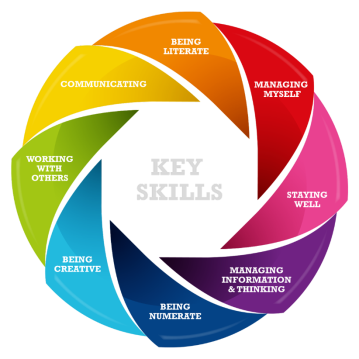 and Assessment (NCCA) (2015) that aim to promote student wellbeing. The approach mentioned previously encompasses all of the key skills associated with the junior cycle. It has a close link with the skills of being numerate, staying well, managing information and thinking and communicating. By stating this, the researcher is not excluding the possibility that numeracy does not cross between all of the key skills.
and Assessment (NCCA) (2015) that aim to promote student wellbeing. The approach mentioned previously encompasses all of the key skills associated with the junior cycle. It has a close link with the skills of being numerate, staying well, managing information and thinking and communicating. By stating this, the researcher is not excluding the possibility that numeracy does not cross between all of the key skills.
On a deeper level, numeracy incorporates three different types of knowledge. Beginning with Mathematical Knowledge (Foundation of numeracy) leading to Contextual Knowledge (The ability to apply the foundation skills) and finally to Strategic Knowledge (the flexibility to use the previous knowledge to solve strategic problems.

2.3 PISA Assessment
PISA or The Programme for International Student Assessment is an assessment conducted every 3 years with students from 65 different countries at the age of 15. The assessments focus on student’s proficiency in the areas of Reading, Science and Mathematical Literacy. It takes a different focus every year with the process repeating itself every 3 years. In 2003 and 2012, Mathematical literacy was the primary focus of assessment. In the figure below, it is clear to see how well Ireland has done over the years. Cosgrove et al. (2013) however found that although it is positive that Ireland’s performance has not decreased between 2003 and 2012, it must be noted that there has been a decline by other OECD countries which could have resulted to Ireland’s placement in 2009.
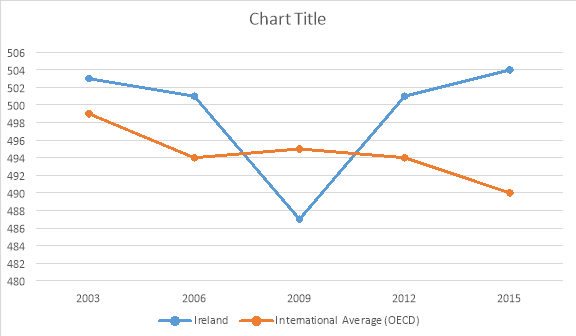
In recent years, the Irish Government has many strategies and frameworks to help deal with the under-performance of students. The National Strategy to improve Literacy and Numeracy among Children and Young People 2011-2020 (2011) emphasises that all students should leave school numerate and focuses on the fact that “literacy and numeracy are among the most important life skills that our schools teach. No child should leave school without having mastered these skills to the best of their abilities“. The main research areas of this document focus on Enabling parents and communities to support children’s literacy and numeracy development, Improving teachers’ and ECCE practitioners’ professional practice, Building the capacity of school leadership, Improving the curriculum and learning experience, Helping students with additional learning needs to achieve their potential and Improving assessment and evaluation to support better learning in literacy and numeracy (Department of Education and Skills, 2011, p. 3). The strategy outlines clear objectives regarding what needs to be accomplished and outlines a timeline for plans to be made in order for these objectives to succeed. However the can be some issues with this strategy. It recommends that teachers partake in CPD for 20 hours over a 5 year period and resources have been aimed at DEIS schools which can be seen with the Junior Cert School Programme (JCSP).
2.4 International Advances
Looking at this from an international view, the United Nations Educational and Cultural Organisation (UNESCO, 2012) understand that even when a student finishes their education, they still lack the required knowledge and skills that are associated with mathematics. Conway and Sloane (2005, p.15) determine two main concerns in international trends in mathematics education, “poor levels of understanding and achievement gaps” and “the need for 21st century skills“. These are respectively called the push and pull factors.
Zawojewski and McCarthy (2007) have commented on the ramifications of introducing a strategy that would see students actively engage with rich everyday applications of their mathematics.
- Other Relevant literature
This research paper will aim to focus on the importance of numeracy in the classroom and how a music teacher can improve the numeracy ability of the students in class. As this research focuses on different strategies, the researcher focused on numeracy strategies that have been created and implemented in different countries. This in itself provided the researcher with a broad sense of where they wanted to go and how they were to go about it.
One of the first documents that was researched was the Literacy and Numeracy for Learning and Life (2011) which was document that was published by the Department of Education and Skills in direct response to the PISA results. This document highlights a lot of really fair points regarding the development of literacy and numeracy in the education of students, but it is far more biased towards the literacy than the numeracy. Surprisingly enough, every time the word numeracy was searched just before it was the term literacy. Yes they are a combining factor but they represent two very different themes in the world of developing the educational needs and skills of each student. Getting the students to realise the connections between music and numeracy will help them to engage with what they are learning. In conjunction with the literacy and numeracy strategy, this research paper will draw from different methodologies and perspectives of music teachers and education specialists.
Diverse Methodologies in the Study of Music Teaching and Learning (2008)covers a broad range of research subjects that researcher drew ideas from. A large number of the chapters present in this book are based on practiced based research in the classroom. As the research is focused on students in first year one article in which the researcher drew valuable insights from was First-Year Teachers and Methods Classes: Is there a connection? By Margaret Schmidt. This study examined “the ways that three first year string teachers applied a song-teaching method emphasized in their junior-year”. (Schmidt, 2008, p. 67) Schmidt focuses on the students’ developments but focuses on the teachers and how they need to be continually developing as teachers.
Growing from these ideas Brown explored “Actualising Potential in the Classroom: Moving from Practicing to be Numerate Towards Engaging in the Literature Practice of Mathematics” and stated all students should have access to mathematical knowledge (Brown, 2011). He writes about transforming numeracy into literacy through engaging in mathematical practice. One way that this could be addressed is through practical performance. Students could be introduced to a numerical concept and that a musical performance activity could be introduced to structure the concept and could also help to refocus or clear up any misconceptions that the learners may have. Brown writes about mathematical literacy in a social context and getting the students to associate mathematical language with everyday concepts. This refers back to the literacy and numeracy strategy where the aim is to improve student’s numeracy abilities through linking it to outside experiences.
“Mathematics and Music” by David Wright explores all the variations of number sequences, logarithms, music intervals, scales, octave identification, timbre and even tuning all of which can be replicated in the classroom. This book will form a basis in this research on how to promote numeracy in the classroom and how numeracy can be developed. According to Wright ” Mathematics attempts to understand conceptual and logical truth…Music evokes mood and emotion by the audio medium of tones and rhythms…Therefore it is not surprising that the symbiosis of the two disciplines is an age old story”. (Wright, 2009, p. v)
Numeracy is not mentioned in the curriculum which is a sign that the curriculum itself needs to be updated. David Elliott writes that there are numerous concepts of what curriculum is and what it means and even states that is has “monopolized the thinking if scholars and teachers”. (Elliott & Silverman, 2015, p. 394) He mentions Ralph Tyler who proposes that curriculum makers should follow a four step process. (ANDREW WHAT ARE THE FOUR STEPS) This process could help with the integration of numeracy into the curriculum just like literacy is already included. This is why “Re-setting Music Education’s “Default Settings” would come into effect. Written by Thomas Regelski in 2013 explores how it needs to be “rethought and complemented and enhanced” for the learner in that it does not hinder their learning in any way.
2.4 Overview
This literature review has shown that there has been research and documentation around the area of numeracy. Numeracy is an area that has many links to cross-curricular subjects and developing numeracy “skills among all young people is fundamental to the life chances of each individual and essential to the quality and equity of Irish society” (Department of Education and Skills, 2011). This research paper focuses on clarifying what numeracy is and its importance. It will also aim to promote numeracy in a music class that will develop and promote learning in a positive and constructive way. There are assessments available to test numeracy but none specific to music and numeracy since this research has been conducted. So this research paper will be focusing on looking at how to develop numeracy that is related to music and that it is linked to both the curriculum and the learning of each student. It can also be used as an aid for teachers to see how they themselves can incorporate numeracy into their classroom and tailor it for each student’s ability. One aspect that will have to be looked into in further detail is that of questioning and how are the student’s numeracy skills being tested.
Chapter 3: Methodology
3.1 Introduction
In the previous chapter, the researcher focused on literature and research addressing the areas of numeracy and music. The aim of this chapter is to explain how this study was designed and the specific reasons towards choosing the quantitative method. This thesis is based on action research. This chapter will highlight the ethical considerations of the research and. This chapter will firstly begin by outlining the research paradigm explain how data was collected.
3.2 Research aims and objectives
The aim of this strategy is to see if numeracy can be developed in a music classroom with the aid of a guide. This strategy is a development from the results that Ireland has received in the PISA scores over the previous years. As mentioned in the introduction, there were three questions that helped to create this research and from those questions the research was looking at gathering quantitative data, using a pre and post-test with two different classes. This will allow the researcher to appraise the increase, if any, in the student’s numerical abilities.
3.3 Action Research
Action research cited in Hine (2013) is a “process of systematic inquiry that seeks to improve social issues affecting the lives of everyday people” however on a more direct note to where it is situated in the classroom, Stringer (2014) describes it as “a distinctive approach to inquiry that is directly relevant to classroom instruction and learning and provides the means for teachers to enhance their teaching and improve students learning” Both of these representations of action research have helped to prove the researcher with enough information to understand the concept.
When following an action research plan there are a few ways that it could be undertaken. For the focus of this research the researcher will outline the method of Kurt Lewin and its importance. Cohen et al. (2011) name Lewin as the originator of the action research process in breaking it down into four different sections; Planning, Acting, Observing and Reflecting. (INSERT DIAGRAM)
From this model there have been numerous changes made. Kemmis and McTaggart (2005) action research cycle is similar in that it has a plan, act, observe and reflect, but this reflection is allowing the researcher to change the plan and begin the cycle again.
3.4 Quantitative Research
The research methodology employed uses quantitative analysis. Creswell (2002) describes quantitative analysis as “strategies of inquiry…that invoked the postpositivist perspectives”. These strategies are in the forms of experiments of surveys. postpositivist perspectives are considered to be that of a scientific method and it refers “challenging the traditional notion of the absolute truth of knowledge” and that the claims we make cannot be positive when studying the performance and abilities of humans (Creswell, 2002). Punch (2009) mentions quantitative research employing three different ideas;
- “Conceptualizes reality in terms of variables
- Measures these variables
- Studies relationship between these variables”
Using these themes the researcher will follow how to correlate effectively the results gathered.
3.5 Instruments
3.5.1 Pre-post test
The researcher employed different instruments to help bring about the findings of the study. To validate the students numeracy skills the researcher had to firstly find out where the students were regards to their learning. The researcher created a specific pre-test to assess their numeracy knowledge. The researcher focused on the concepts of the first year music curriculum and transferred any correlations with numeracy to an assessment form. (appendix) The researcher wanted to keep the focus on numeracy and assess what they students were able to do regarding rhythm.
Find Out How UKEssays.com Can Help You!
Our academic experts are ready and waiting to assist with any writing project you may have. From simple essay plans, through to full dissertations, you can guarantee we have a service perfectly matched to your needs.
View our academic writing services
3.6 Validity and reliability
During this research, the researcher gathered quantitative data to get the best way of measuring student’s results regarding numeracy. The researcher believes that the findings have depth and provide detail as to confirming the research outcomes. Validity is “an indication of how sound your research is”, with looking at both design and method (BYU Department of Linguistics, 1997) of the research area. When looking at quantitative data one must be careful. Winter (2000) says that it is difficult to get 100% and that a certain degree of error is to be anticipated. Reliability is about the precision and accuracy of the research over a period of time. Having the pre and post-tests very close to each other can alter the reliability. Due to the 6 week period between pre and post-tests, the researcher believes the results to be reliable. It took 3 weeks getting consent forms back from the students which cut down the time between pre and post-test tests..
3.7 Ethical considerations
Hammersley and Traianou (2012, pp.2-3) outline the subsequent themes as the main ethical issues that need to be addressed;
- “Minimising Harm
- Respecting Autonomy
- Protecting Privacy
- Offering Reciprocity
- Treating People Equitably“.
As this research is aimed towards the learning and development of student’s numeracy, the research had to get ethical approval as it would be focusing on those who would be unable to give consent. The researcher received ethical approval from FAHSS Research Ethics Committee from the University of Limerick in June 2016. The researcher proceeded to provide information sheet to the principal (appendix) and co-operating teacher. (appendix) Then the researcher provided the same information to each of the participants and their parents/ guardians. (appendix) Provided on the information sheet were details about how the research would have been conducted. It outlined that they could withdraw from the study at any time and that anonymity would be used.
3.8 School profile and study sample
The school where this research was conducted is a large town in Munster. It is a co-educational school and both classes are made up of mixture of males and females. Both first year classes are students between the ages of 12 and 13. In this school, all students do music in first year regardless of prior experience or musical knowledge. Then when it’s time for them to move onto 2nd year, the students are given the option to do music if they would like. Before implementing the prior test, the research introduced some rhythms to both groups to get the students interacting and to get an understanding of what they were going to learn.
Before the intervention, the researcher made sure that both classes were relatively on the same level before giving out the pre-tests.
QUESTIONS ASSESSING STUDENTS NUMERACY
- What is a crotchet added to another crotchet?
- What is the interval between middle C and Eb?
- How many notes are there in a 1 octave scale?
- How many crotchet/ quaver/ minim/ semibreve beats are there in this phrase?
- How many beats are there in a semibreve?
- What is a crotchets added to a crotchet added to a quaver?
- What is the difference between 3 quavers and 2 crotchets?
- How many crotchet beats are the in 5/4?
- How many quaver beats are there in 13/8?
- How many minim beats are there in 3/2?
(A musical phrase can be found on the next page)
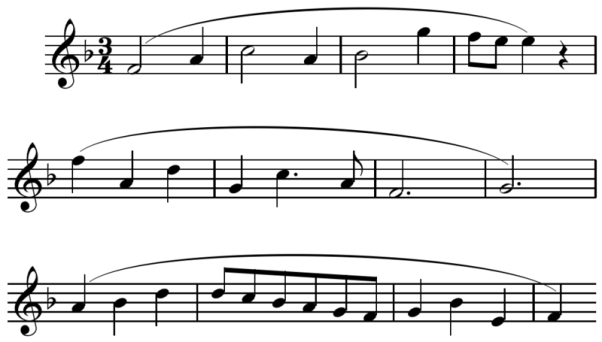
Source: Mozart‘s Piano Sonata in F, K. 332, first movement. (https://en.wikipedia.org/wiki/Phrase_(music)#/media/File:Mozart_-_Piano_Sonata_in_F,_K._332,_first_movement_phrase_group.png)
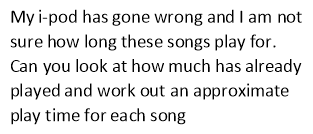
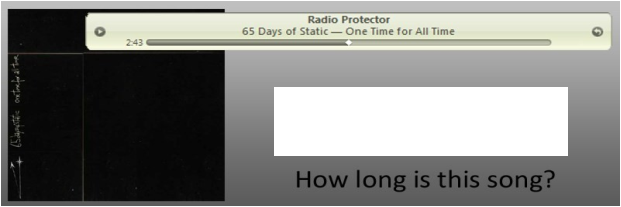
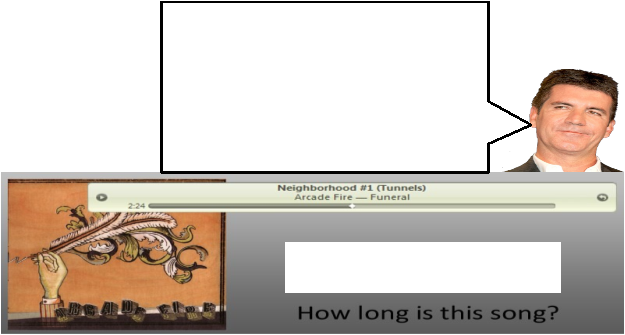



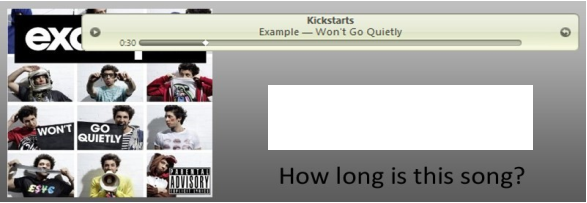

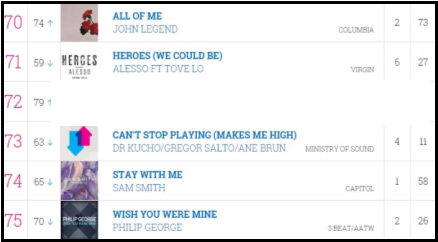
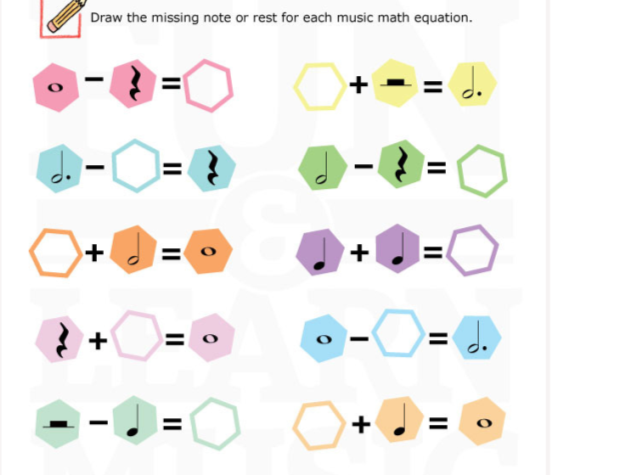
Source: http://funandlearnmusic.com/portfolio-item/music-worksheets-music-and-math-14/
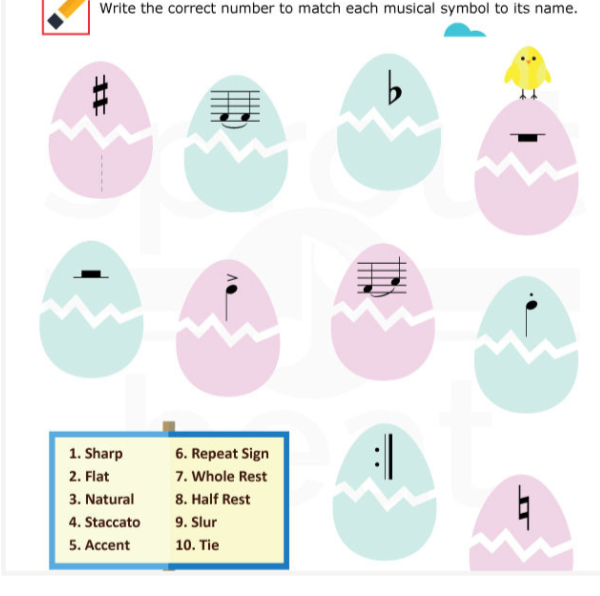
Source: http://funandlearnmusic.com/portfolio-item/music-worksheets-music-and-math-14/
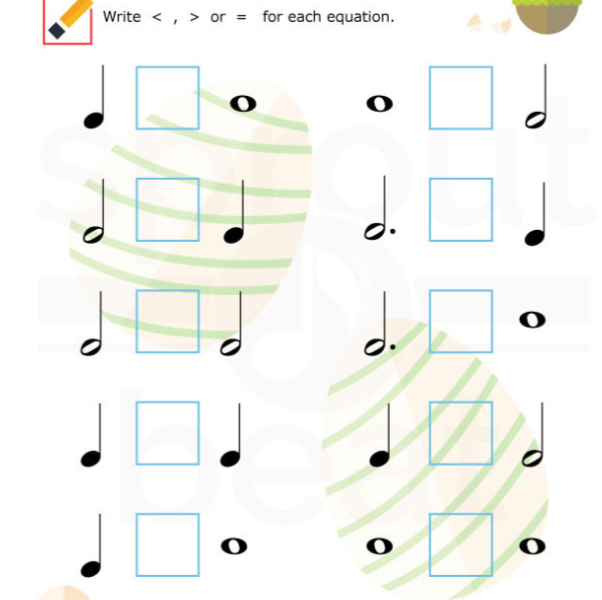
Source: http://funandlearnmusic.com/portfolio-item/music-worksheets-easter-note-value-4/
Cite This Work
To export a reference to this article please select a referencing style below:


